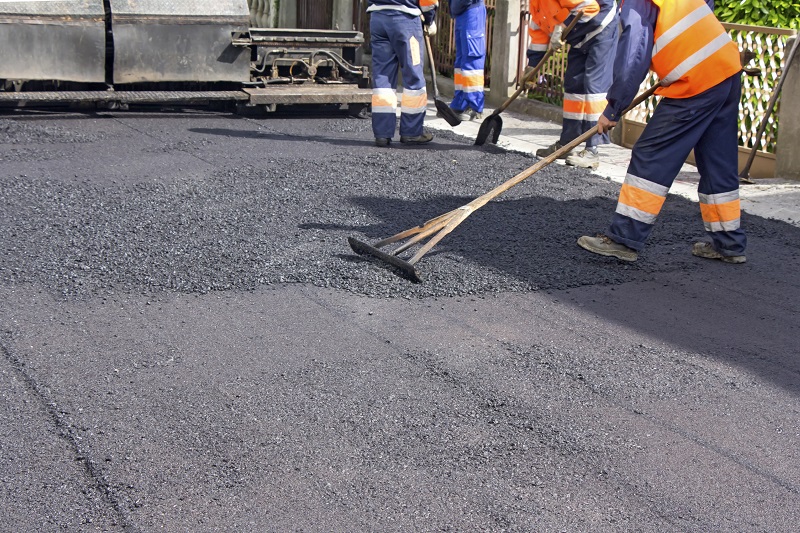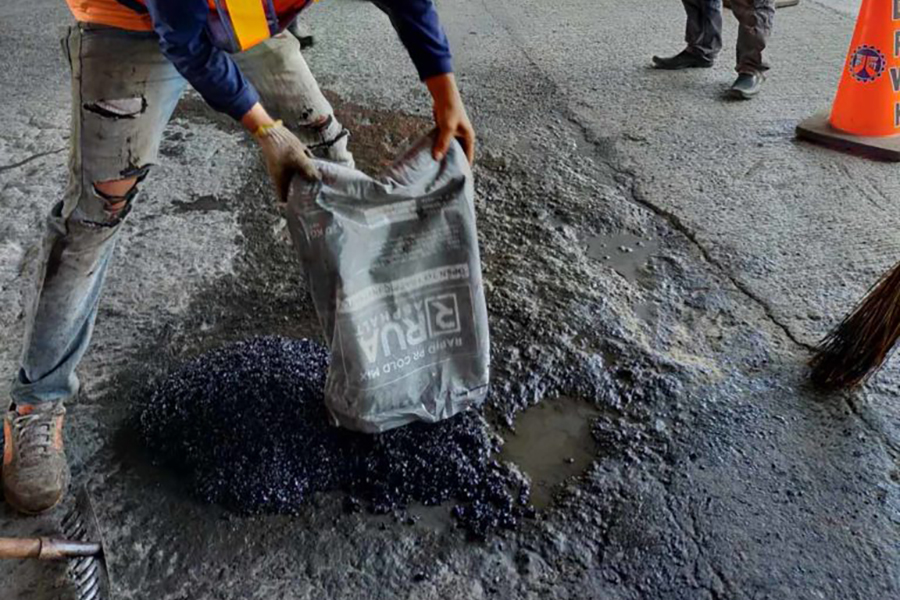Hot Mix Asphalt: The Structure for Safe and Secure Angled Parking Lots
Hot Mix Asphalt: The Structure for Safe and Secure Angled Parking Lots
Blog Article
Unlocking the Tricks of Hot Mix Asphalt Innovation
Discovering the depths of hot mix asphalt technology reveals a globe where accurate formulations and precise processes assemble to shape our roadways and facilities. The fusion of binders, fillers, and accumulations isn't simply a building job however a critical orchestration of resilience and performance. As we peer into the detailed dancing of components, a tapestry of durability and sustainability unfolds. What exists under this surface of asphaltic mastery, and what keys wait to be introduced in the realm of leading developments?
Significance of Hot Mix Asphalt
Warm Mix Asphalt plays an important function in modern infrastructure growth because of its toughness and cost-effectiveness. As one of the most frequently made use of paving product for roadways, freeways, and car park, Hot Mix Asphalt offers a variety of benefits that add to its relevance in building projects. One vital advantage is its capability to stand up to hefty website traffic lots and harsh climate condition, offering a dependable and long-lasting surface area for transportation networks. Furthermore, Warm Mix Asphalt is economical in both preliminary building and long-term upkeep, making it a preferred selection for lots of framework jobs.
The sturdiness of Hot Mix Asphalt stems from its make-up, which includes aggregates, binder, and filler materials that are carefully selected and blended to meet specific performance requirements. Overall, the value of Warm Mix Asphalt in infrastructure growth can not be underrated, as it continues to be a foundation of modern construction practices.
Components of Asphalt Mixes
The composition of asphalt mixes contains meticulously chosen aggregates, binder, and filler products that are vital for attaining details efficiency requirements. Aggregates are the key component of asphalt blends, providing strength and security. These aggregates can be natural, such as crushed rock or smashed stone, or artificial, like recycled materials from old sidewalks. The binder, commonly bitumen or asphalt concrete, holds the aggregates with each other and offers flexibility and longevity to the mix. The choice of the binder is critical as it directly affects the mix's performance in different climate problems. Fillers, such as moisturized lime or Rose city concrete, are utilized to enhance the mix's workability and aging resistance. Angled Parking.
The combination and percentage of these elements play a substantial role in identifying the quality and performance of the asphalt mix. Engineers carefully design the mix to satisfy particular demands, considering variables like website traffic volume, climate conditions, and sidewalk lifespan. Appropriate option and balancing of accumulations, binder, and fillers are essential for developing durable, durable asphalt sidewalks.
Combining and Production Strategies
Once the accumulations are chosen, the binder, commonly asphalt cement, is added to bind the materials with each other. The binder's top quality and quantity substantially impact the mix's toughness, resistance, and adaptability to ecological factors. In addition, fillers like moisturized lime or Rose city concrete might be incorporated to enhance details characteristics of the asphalt mix, such as its workability or wetness resistance.
Throughout manufacturing, the aggregates and binder are heated, commonly between 250-325 ° F(121-163 ° C ), to promote blending and ensure correct coating of the accumulations. The mixing procedure should be comprehensive to attain an uniform blend that advertises the wanted performance features of the asphalt. Various strategies, such as batch mixing or drum blending, are employed to achieve high-quality and constant asphalt blends for building and construction tasks.
Variables Affecting Asphalt Performance
Variables influencing asphalt performance encompass a range of variables that influence the toughness, long life, and general top quality of asphalt pavements. One key aspect is the quality of materials used in the asphalt mix. The kind and source of accumulations, the binder high quality, and the additives all play a significant function in establishing the performance of the asphalt sidewalk. The gradation of aggregates is important as it impacts the mix's resistance, workability, and security to fracturing and rutting.

Design considerations, such as sidewalk density and drainage, are crucial in guaranteeing the long-term efficiency of the asphalt sidewalk. By meticulously considering these aspects, specialists and designers can enhance asphalt efficiency and enhance the solution life of sidewalks.
Lasting Practices in Asphalt Technology

WMA enables for the manufacturing and placement of asphalt mixes at reduced temperature levels contrasted to typical hot-mix asphalt, resulting in minimized energy intake and greenhouse gas discharges. The use of permeable asphalt mixes can help mitigate stormwater runoff issues by allowing water to penetrate with the sidewalk and right into the ground, advertising all-natural water purification and reenergize procedures.
Final Thought
In conclusion, hot mix asphalt innovation plays an essential role in modern-day infrastructure growth because of its durability and cost-effectiveness. By carefully balancing components, employing appropriate mixing strategies, and taking into consideration numerous factors, designers can produce top notch asphalt blends that stand up to heavy traffic lots and harsh climate condition. Welcoming lasting methods, such as making use of recycled materials and warm-mix technologies, further enhances the environmental kindness of asphalt innovation.
Mixing and manufacturing techniques in warm mix asphalt innovation include the precise mix and handling of aggregates, binder, and fillers to create a high-performance and resilient asphalt visit mix.Factors affecting asphalt performance include an array of variables that impact the resilience, longevity, and he has a good point overall top quality of asphalt sidewalks. Sustainable practices in asphalt modern technology encompass different campaigns aimed at reducing the ecological effect of asphalt manufacturing and paving procedures. By including recovered asphalt sidewalk (RAP) and recycled asphalt tiles (RAS) into brand-new asphalt mixes, the industry can considerably decrease the consumption of raw materials and power, while additionally decreasing landfill waste.
WMA enables for the production and placement of asphalt blends at reduced temperature levels contrasted to typical hot-mix asphalt, resulting in minimized energy intake and greenhouse gas exhausts.
Report this page